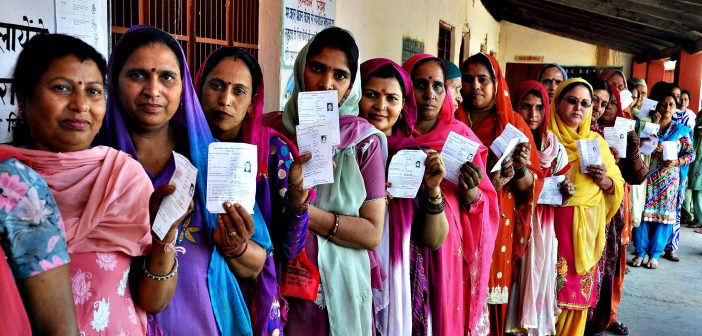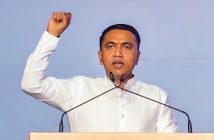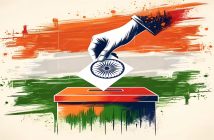It is known as Goa’s ‘belt of kingmakers and party-hoppers’ and has thrown up no less than four Chief Ministers.
Even by the standards of Goa’s baffling political shifts, Catholic-dominated Salcete, with its sylvan settings framed by the backwaters of the Sal River in South Goa, has defied political interpretation.
The eight constituencies of Salcete (the name a Portuguese version of the Konkani ‘Saxxti’ derived from the 66 villages that originally formed its territory) has been the hinge on which Goa’s political fortunes have revolved.
With a Christian population of roughly more than 40% in all these eight seats, this is the area which has largely remained impervious to the Bharatiya Janata Party (BJP) and the hardline elements within the Sangh Parivar, and has remained the saffron party’s ‘Achilles Heel’ in Goa.
The seats of Margao, Fatorda, Navelim, Curtorim, Benaulim, Velim, Nuvem and Cuncolim (which comprise Salcete) have proved a tough nut to crack, with the BJP never winning more than two seats in a straight contest till now.
It had won Margao thrice (1994, 1999 and 2002) solely because ex-Chief Minister and veteran Congressman Digambar Kamat had flirted with the saffron party at the time. Likewise, Fatorda had been won twice by the BJP’s Damodar Naik in 2002 and 2007 before being lost since then to the Goa Forward Party (GFP) chief Vijai Sardesai, who has now allied himself with the Congress for the upcoming election.
Manohar Parrikar’s Gambit
It took all of late BJP Chief Minister Manohar Parrikar’s guile to launch the so-called ‘Mission Salcete’ gambit in 2012 — a stratagem whereby the BJP, whilst not contesting on all eight seats, would support non-Congress and independent candidates who in turn would back the BJP government in a quid pro quid.
Importantly, Mr. Parrikar who, after toning down the BJP’s ‘Hindutva’ agenda, had succeeded in making the party palatable to the Catholic minority in Salcete and helped his party create a base.
However, bereft of Manohar Parrikar’s sage leadership this time, the BJP under current Chief Minister Pramod Sawant is fielding candidates on all eight seats for the first time in this electorally critical taluk.
Salcete’s political behaviour has always been contrary to the State’s mainstream, and its tallest leaders have won contests against the tide.
1967 Referendum
In the historic 1967 Goa status referendum — the only plebiscite of its kind in Independent India — to determine the Goans’ identity, the final vote went against merging with Maharashtra with the Goans choosing to remain a Union Territory.
Here, it was the Salcete area that held the key in swinging favour for the ‘anti-merger group’ which advocated recognition of Konkani as a separate language and not Marathi. After the Portuguese exit in 1961, Goa’s first Chief Minister, Dayanand Bandodkar, who led the Maharashtrawadi Gomantak Party (MGP) had mobilised the State’s Bahujan community with its demand for a merger with Maharashtra by identifying with the Marathi language.
His rival was Jack de Sequeira, who led the United Goans Party (UGP) which chiefly represented Catholic interests and was backed by upper-caste Hindu landowners — both classes who had prospered by their alliance with the erstwhile Portuguese regime before the exit from the stage in 1961.
While it appeared the pro-merger (with Maharashtra) was leading in the early rounds of the plebiscite, the anti-merger group, especially in the Salcete area, tilted the scales decisively and ensured that Goa remained a separate entity (then a Union Territory until gaining Statehood in 1987) with its distinct identity.
While Goa’s stalwarts such as Bandodkar and Sequeira fought battles on lofty principles, in recent decades, the electoral contests to win the hearts and minds of Salcete’s populace have degenerated into political opportunism.
“When the anti- and pro-merger issue was debated, Salcete’s electorate went against the ruling MGP, supporting the UGP and the Congress. In later years, when the Congress came to power, a sizable electorate here voted for smaller parties who generally made hollow promises to the Catholic populace. These were United Goans Democratic Party (UGDP) and the Goa Vikas Party (GVP) which were dominated by local strongmen such as Churchill Alemao and Francisco Pacheco,” says an election watcher.
Party-Hoppers
Serial party-hoppers such as Mr. Alemao, Mr. Pacheco and ex-Congress MLA Aleixo Lourenco are a fixture of Salcete’s politics, as are ‘kingmakers’ such as Ananta Naik and Vijai Sardesai, the Fatorda MLA whose decisive supported helped Mr. Parrikar form a BJP-led coalition in 2017.
According to observers, polls are fought here primarily on emotive issues, with some dubbing Salcette’s voters — especially the Catholic sub-altern class — as ‘gullible’ and ready to lap up whatever any new party has on offer.
Small wonder then, that besides the mainstream BJP and the Congress, new entrants — be it the Aam Aadmi Party (AAP), the Mamata Banerjee-led Trinamool Congress (TMC) or the freshly-minted Revolutionary Goans (RG) party — seeking to gain a toehold in Goa’s overcrowded political space, have all had their roots in Salcete.
The AAP’s foundations in the coastal State were laid by Elvis Gomes, who later quit Mr. Kejriwal’s party in 2020 and moved to the Congress, while accusing the AAP of being “a Delhi-centric party”.
The Manoj Parab-led RG party, likened by some to Raj Thackeray’s Maharashtra Navnirman Sena in neighbouring Maharashtra, has been appealing to the youth in this belt by building a narrative of Goa’s ‘sons of the soil’ being allegedly deprived of job and opportunities.
The RG, which has fielded fresh candidates in all 40 Assembly seats, has created a stir with its promise to get the POGO (Person of Goan Origin) Bill passed in the Goa Legislature and to give Goans their rights by focusing on jobs, government schemes, land and housing board projects.
The TMC, too, gained an entry in Goa via Salcette after ex-CM and ex-Congressman Luizinho Faleiro (a seven-time MLA from Navelim) joined the party followed by Mr. Alemao, who is seeking re-election from his stronghold Benaulim for a fifth time.
Both these constituencies are now under siege from the AAP, which has fielded advocate Pratima Coutinho from Navelim and Captain Venzy Viegas from Benaulim.
In 2019, by virtue of mass defection of 10 Congress MLAs into the BJP fold, the saffron party gained the seats of Cuncolim, Velim and Nuvem.
However, both BJP Minister Filipe Nery Rodrigues (Velim) and sitting MLA Wilfred d’Sa (Nuvem) exited the saffron party ahead of the polls after being denied tickets, leaving the BJP with just a single MLA in the person of Clafasio Dias from Cuncolim.
While Mr. Sawant had stated last month that there was no need of a ‘Mission Salcete’ and had expressed confidence that his government’s development in the area would carry the day for the BJP, the party faces fierce competition in an overcrowded political arena.




